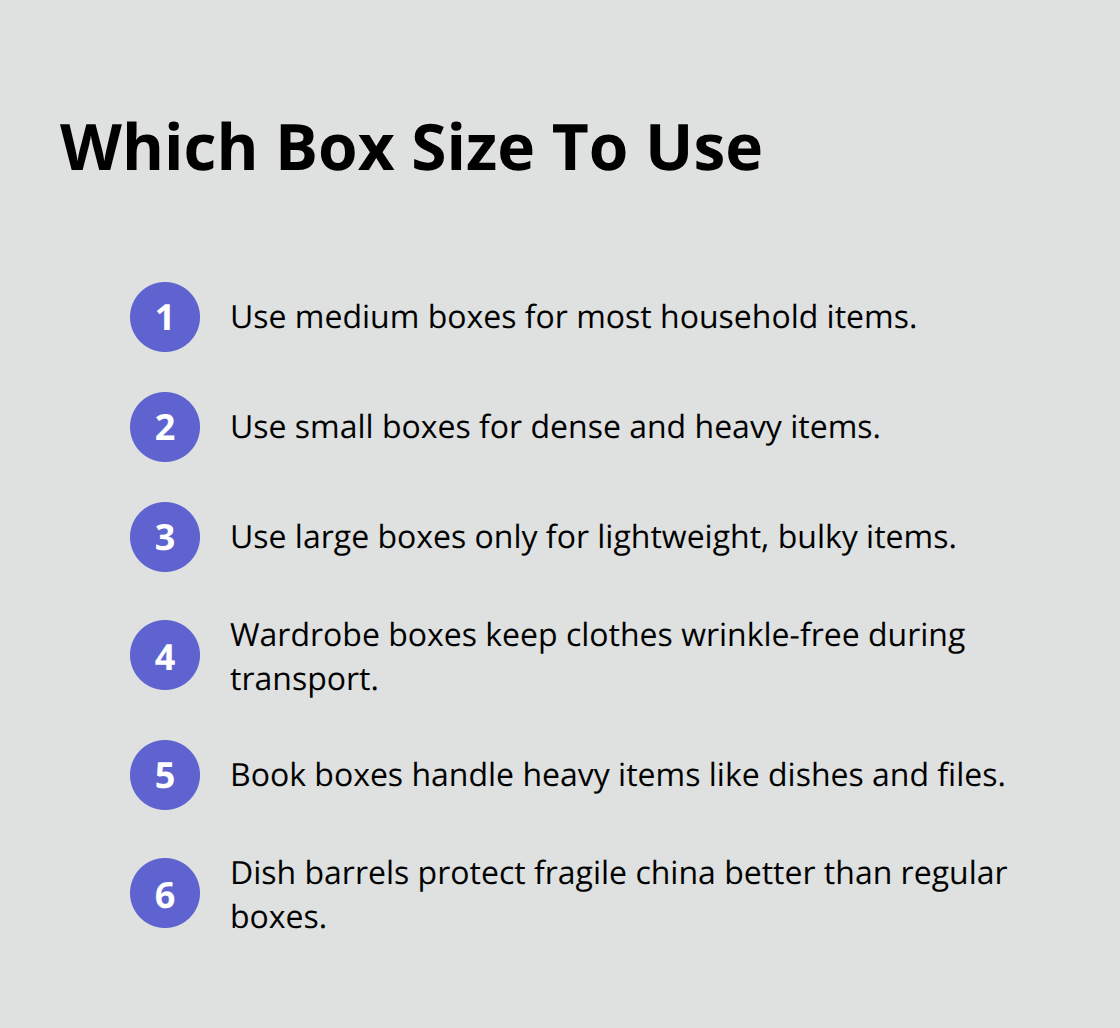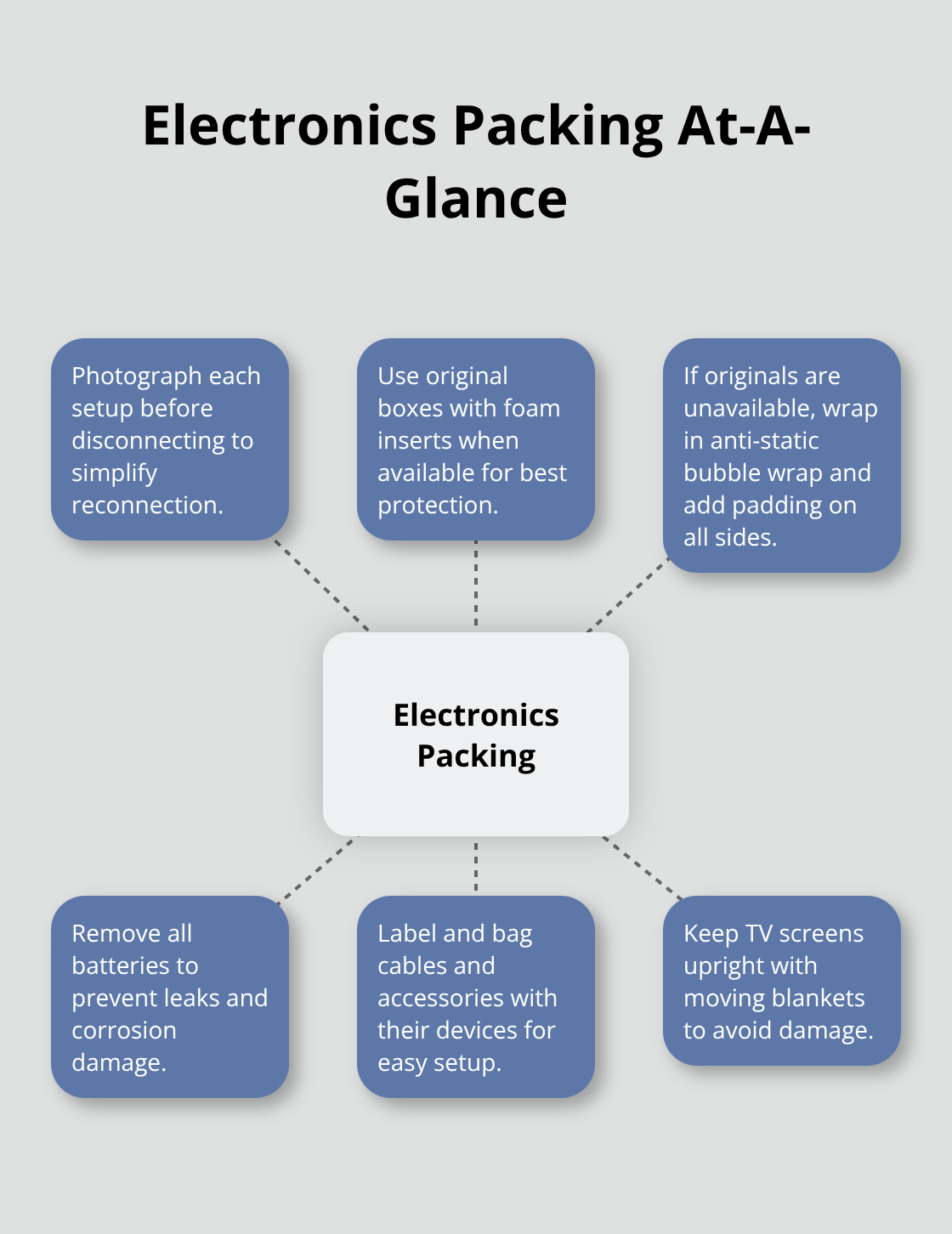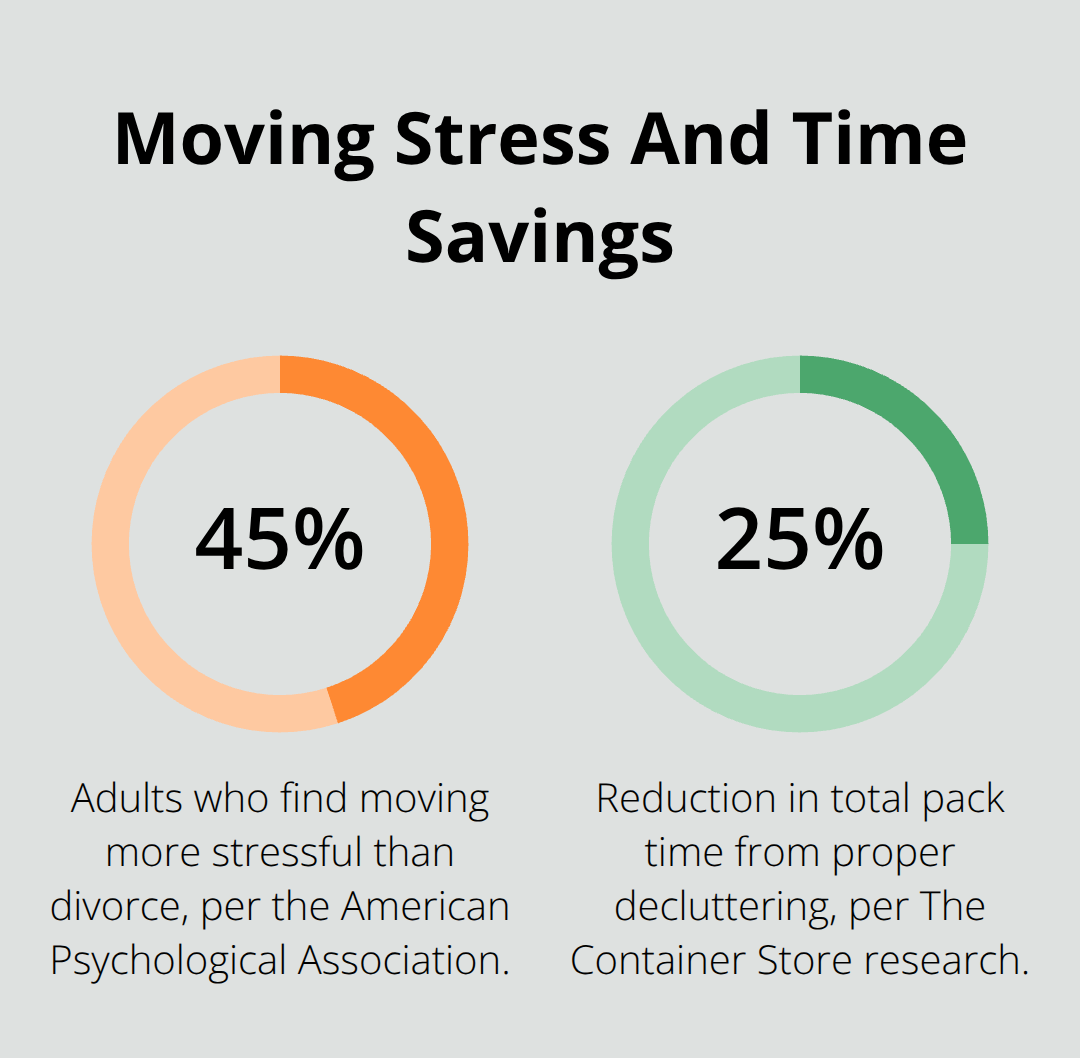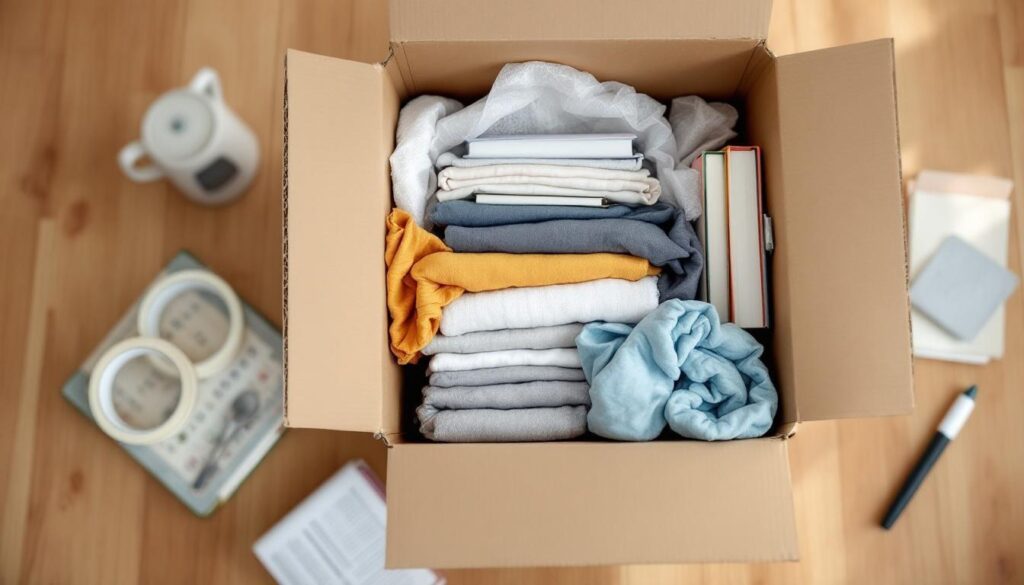Moving house ranks among life’s most stressful events, but the right packing strategy changes everything. Poor planning leads to broken items, lost belongings, and unnecessary chaos.
We at Southbay Moving Systems know that finding the best way to pack when moving house saves both time and money. Smart packing techniques protect your valuables while streamlining your entire move.
Essential Packing Supplies and Tools
The wrong packing supplies turn your move into a disaster. Cheap boxes collapse under weight, inadequate padding leads to broken items, and poor labeling creates chaos at your destination. Professional movers know that quality supplies prevent damages according to industry data.
Boxes in Various Sizes and Specialty Containers
Start with sturdy medium boxes that hold 30-50 pounds maximum. Large boxes tempt you to overpack, which creates back injuries and box failures. Wardrobe boxes keep clothes wrinkle-free and save unpacking time later.
Book boxes handle heavy items like dishes and files without collapse. Specialty dish barrels protect your china better than regular boxes ever could. Amazon’s research shows that proper packaging optimization using deep learning and computer vision significantly improves efficiency.
Medium boxes work best for most household items (books, kitchen supplies, decorations). Small boxes handle dense items like canned goods perfectly. Large boxes should only contain lightweight bulky items like pillows and linens.

Protective Materials and Cushioning Options
Use bubble wrap for fragile items, never newspaper which transfers ink and provides minimal protection. Packing paper works perfectly for dish wrapping and fills empty spaces effectively. Moving blankets protect furniture surfaces from scratches and dents during transport.
Foam peanuts create excellent cushioning for electronics and delicate items. Packing peanuts made from cornstarch dissolve in water (making cleanup easier than traditional foam). Towels and linens double as padding while maximizing space efficiency.
Labeling and Organization Tools
Heavy-duty packing tape creates secure seals that won’t fail during transport. Color-coded labels speed up unpacking dramatically compared to plain labels. Number each box and maintain a detailed inventory list on your phone.
This system prevents lost items and helps you locate essentials immediately. Professional-grade supplies cost more upfront but save money by preventing damage and reducing repacking needs. Quality tools make the difference between smooth packing and complete chaos.
Once you have the right supplies, the next step involves mastering room-specific packing techniques that protect your belongings.
Room-by-Room Packing Strategies
Kitchen packing demands precision because fragile items break easily and create expensive losses. Pack plates vertically like records, never flat, which provides better protection during transport. Wrap each dish individually in packing paper, then bundle groups of 4-6 plates together.
Fill empty spaces with crumpled paper to prevent shifting during transport. Pack glasses inside other glasses with paper between them, then place bundles in dish barrels with cushioning on all sides. Heavy items like cast iron pans go in small boxes at the bottom, while lighter items like plastic containers fill the top portions.
Kitchen and Fragile Items Packing Techniques
Nest bowls inside each other with paper layers between each piece. This method maximizes space while providing adequate protection. Pack knives in knife blocks or wrap blade edges in cardboard before placing them in boxes.
Small appliances need their original boxes when possible. Without original packaging, wrap fragile items individually in bubble wrap and place it in a box with padding on all sides. Coffee makers and blenders have delicate parts that break easily without proper protection.
Bedroom and Clothing Organization Methods
Leave clothes on hangers and slide them into wardrobe boxes directly from your closet. This method saves hours compared to folding everything. Pack shoes in their original boxes when possible, or stuff them with socks and underwear to maximize space efficiency.
Use vacuum-sealed bags for bulky bedding and winter clothes, which provide excellent compression for storage and travel. Jewelry should go in small boxes with dividers, never loose in bags where pieces tangle and break. Mattresses need plastic covers to protect against dirt and moisture during transport.
Living Areas and Electronics Safety Measures
Take photos of all electronic setups before disconnecting anything. This simple step prevents confusion and saves reconnection time at your destination. Pack electronics in original boxes with foam inserts when available.
Without original packaging, wrap items in anti-static bubble wrap and place them in appropriately sized boxes with padding on all sides. Remove batteries from remote controls and small devices to prevent corrosion damage (batteries can leak and destroy circuits).

Pack power cables and accessories in labeled bags taped to their corresponding devices. Television screens need special protection with moving blankets and should always travel upright, never flat. Gaming consoles and computers require extra care due to sensitive internal components that damage easily with rough handling.
Books pack best in small boxes to prevent weight issues. Mix lighter items on top to balance the load effectively. These room-by-room strategies form the foundation, but smart timing and preparation methods can dramatically reduce your overall packing workload.
Time-Saving Packing Techniques
Start your packing process eight weeks before move day to cut stress levels dramatically and prevent last-minute disasters. The American Psychological Association reports that 45% of adults find moves more stressful than divorce, but proper timeline creation changes this completely. Week one should focus on declutter tasks and supply collection.

Weeks two through four handle non-essential items like seasonal decorations, books, and rarely used kitchen gadgets. Weeks five through seven tackle daily-use items systematically, leaving only absolute essentials for the final week.
Advanced Timeline Creation
Create a detailed room-by-room schedule that allocates specific days for each area. Bedrooms require two days each for thorough packing, while kitchens need three full days due to fragile items and complex organization needs. Bathrooms pack quickly in half a day, but electronics areas demand two full days for proper cable management and protection. The National Association of Professional Organizers found that 30% of people discover forgotten items during pack time, which disrupts timelines significantly. Build buffer days into your schedule for unexpected discoveries and last-minute decisions.
Declutter Before You Pack
Declutter before pack work reduces move costs by 10% to 30% according to Consumer Reports study. Use the one-year rule for clothes and household items – anything unused for twelve months goes to donation. Books, kitchenware, and decorations follow the same principle ruthlessly. Sell valuable items through Facebook Marketplace or eBay at least four weeks before move day to allow transaction time. The Container Store research shows that proper declutter work reduces total pack time by 25% while cutting move weight substantially (which directly impacts your final bill).
Professional Packing Services vs DIY Approach
Professional pack services cost $280 to $2,200 but save 15-20 hours of labor time. DIY pack work requires supply purchases that cost $200-400 plus your time investment. Professional packers complete full-house pack jobs in 6-8 hours compared to 20-30 hours for inexperienced packers. They bring specialized materials and techniques that prevent damage better than amateur efforts. However, DIY pack work allows complete control over declutter decisions and item placement (giving you final say over what stays or goes). Professional services make sense for fragile collections, valuable artwork, or time-constrained moves.
Final Thoughts
Smart pack strategies turn your move from chaos into success. The best way to pack when moving house requires quality supplies, room-specific techniques, and proper timeline management. Start eight weeks early, choose medium boxes for most items, and pack plates vertically for maximum protection.
Declutter work reduces costs by up to 30% while cutting your workload significantly. Professional services cost $280-2,200 but save 15-20 hours of labor time. DIY pack work gives you complete control over decisions and item placement (plus saves money on labor costs).
Quality supplies prevent damage better than cheap alternatives. Wardrobe boxes keep clothes wrinkle-free, while dish barrels protect fragile items during transport. When complex moves involve valuable items or tight deadlines, Southbay Moving Systems provides expert residential and commercial services backed by transparent pricing and positive customer reviews.




